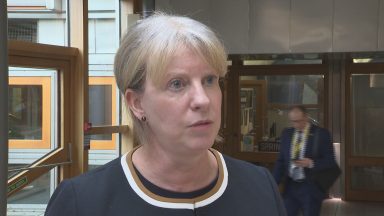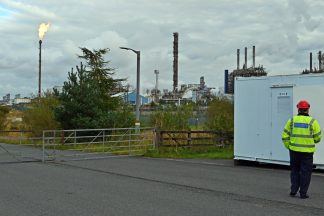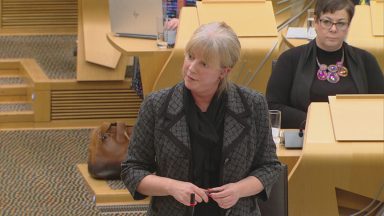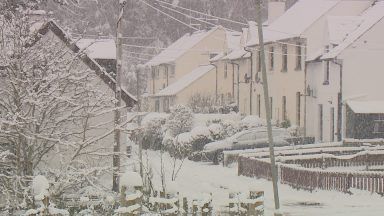The Met Office has revealed the storm names for the 2024/25 season – with a tribute to a Scottish meteorologist whose forecast helped end the Second World War.
Group Captain James Stagg is among figures included in the new list from the Met Office’s 170-year history.
The forecaster said Captain Stagg was the chief meteorologist responsible for advising General Dwight Eisenhower on the weather forecast for the D-Day landings.
He and his team forecast poor weather on June 5, 1944, which led to General Dwight Eisenhower postponing the invasion. They also identified the narrow weather window on June 6 which allowed the invasion to take place.
Captain James Stagg’s forecast was the most important one the Met Office has ever produced.
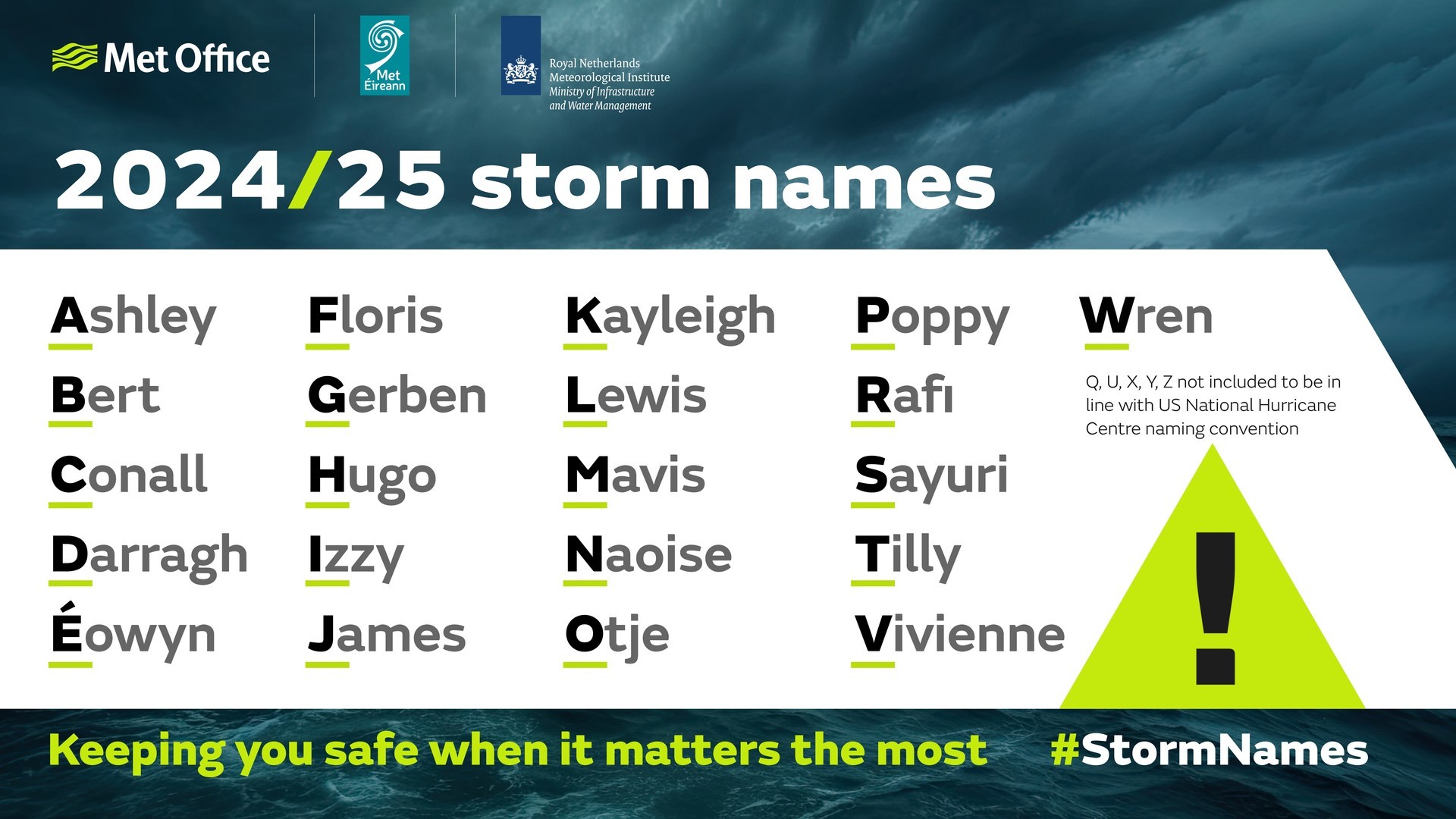 Met Office
Met OfficeJames Stagg was born on June 30, 1900 in Dalkeith, the son of Alexander Cairns Stagg, plumber, and Helen Martin.
He graduated with a degree in mathematics and natural philosophy at the University of Edinburgh. He joined the British Meteorological Office in 1924. He also led a British Polar Expedition to the Arctic.
He was appointed chief meteorological advisor to Eisenhower, the supreme commander of the projected Allied invasion of northern France, in 1943.
Captain Stagg’s work as a meteorological advisor to D-Day military planners, working with both British and American forecasting centres, helped pave the way for the Allied victory and bring an end to the war.
He was recognised for his efforts in later years and elected a fellow of the Royal Society of Edinburgh and president of the Royal Meteorological Society. He was also appointed an officer of the US Legion of Merit in October 1945.
Stagg died in Seaford, East Sussex aged 74 in 1975.
The new storms list – first launched in 2015 – for each year generally runs from early September until late August the following year, coinciding with the beginning of autumn.
Other names include Lewis, because of Lewis Fry Richardson, who devised a theory to use maths and physics to make weather forecasts using computers.
Mavis is named after Mavis Hinds, who worked on the earliest Met Office computers.
Along with Met Eireann in Ireland and KNMI, the Dutch weather service, meteorologists name storms so that the communication of severe weather is easier.
- Ashley, Bert and Conall will be the first three named storms by the group this season.
- Met Office contributions to the list include submissions from the public and names of significant people from our 170-year history.
- Naming storms helps to communicate the risks of severe weather.
Storms will get named by the group when they’re deemed to have the potential to cause ‘medium’ or ‘high’ impacts in the UK, Ireland or the Netherlands.
Wind is the primary consideration for naming a storm, but additional impacts from rain or snow will also be considered in the naming process.
 Met Office
Met OfficeThe list runs from early September to late August the following year to coincide with the start of autumn and the end of summer, when the likelihood of low-pressure systems and the potential for named storms increase.
Met Office Head of Situational Awareness Will Lang, who leads responses in times of severe weather, said: “This is the tenth year of us naming storms and we do it because it works. Naming storms helps to make communication of severe weather easier and provides clarity when people could be impacted by the weather.
“For Storm Babet, which brought exceptional rainfall to parts of eastern Scotland in October 2023, post event surveys suggest 97% of people within the amber and red warning areas were aware of the warnings and 89% of them took action as a result.
“This year, as we celebrate our 170th birthday, it’s great to be able to honour those who have had an impact on our long history of pioneering weather and climate science services.”
The group named 12 storms in the 2023/24 season, reaching the letter ‘L’ with Lilian on August 2024. This is the furthest through the list the Western European naming group has got since storm naming was introduced in 2015.
Will said: “Storm seasons are highly variable in the UK, with some seasons seeing a low frequency of named storms, and others more.
“One reason there were so many storms last year was the position of the jet stream through much of autumn and winter, which brought a succession of low-pressure systems towards the UK which became named storms.”
Each year, the Met Office, Met Éireann and KNMI collate the list together. KNMI have chosen names suggested at an environment fair, whereas Met Éireann selected names chosen by children at a STEM event.
The full list for 2024/25 is: Ashley, Bert, Conall, Darragh, Eowyn, Floris, Gerben, Hugo, Izzy, James, Kayleigh, Lewis, Mavis, Naoise, Otje, Poppy, Rafi, Sayuri, Tilly, Vivienne and Wren.
Follow STV News on WhatsApp
Scan the QR code on your mobile device for all the latest news from around the country


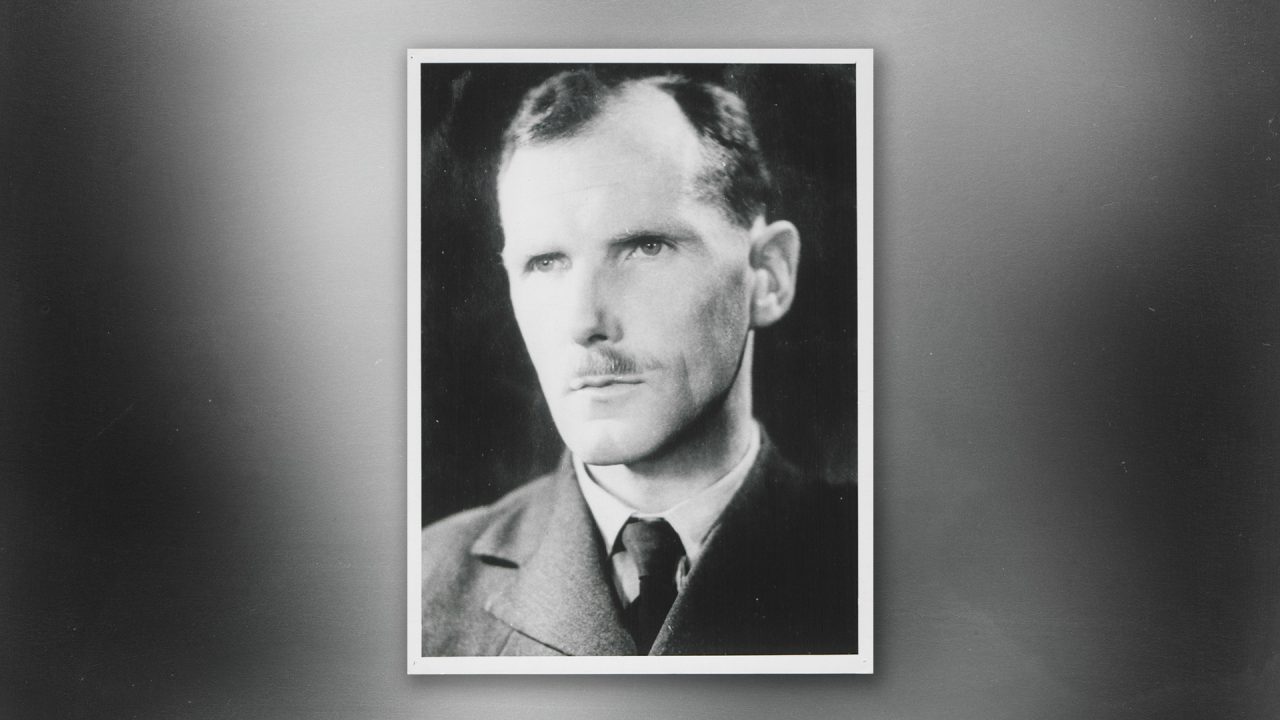 STV News
STV News



